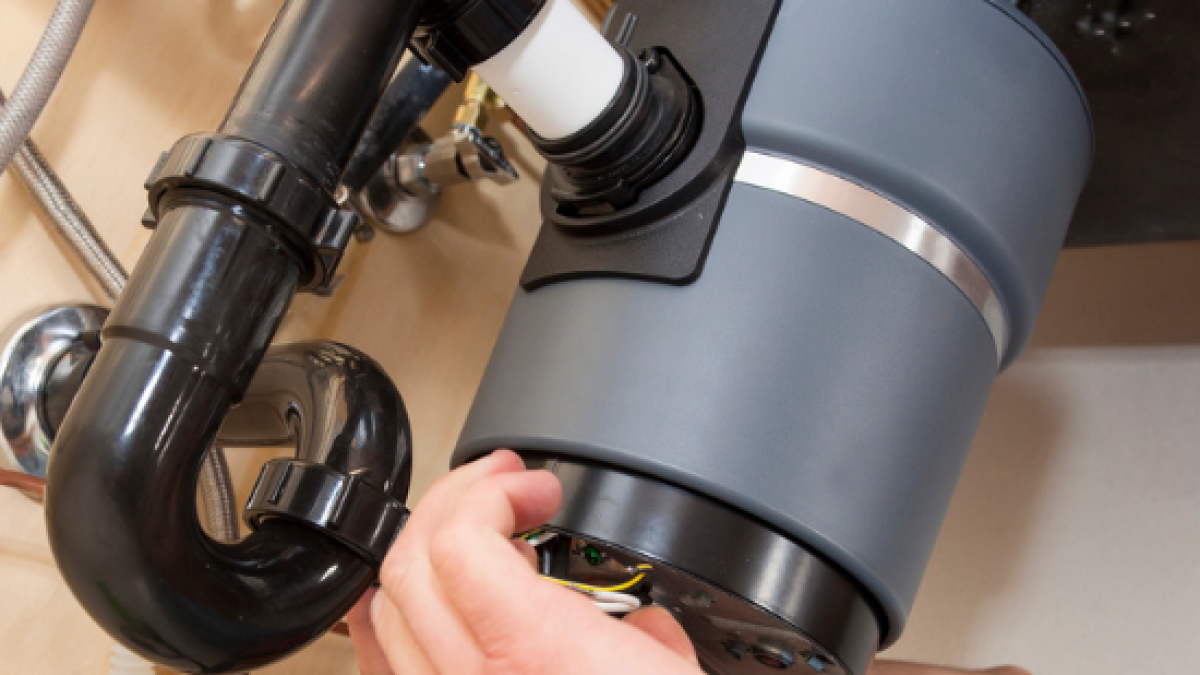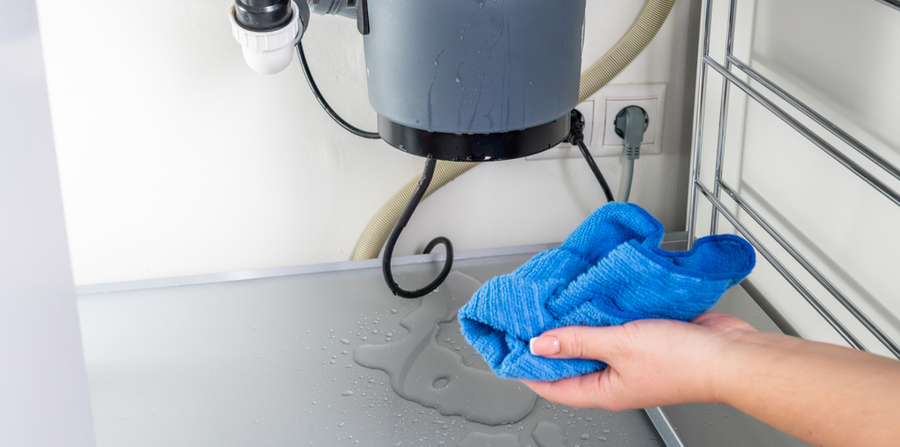Speedy Fixes for a Dripping Garbage Disposal
Speedy Fixes for a Dripping Garbage Disposal
Blog Article
Were you interested in facts around Why Is ?

Garbage disposals are crucial kitchen home appliances that assist in taking care of food waste efficiently. Nonetheless, a dripping waste disposal unit can be a discouraging and unpleasant problem to handle. Thankfully, numerous leaks can be fixed easily with a few simple steps. In this article, we will review just how to deal with a dripping waste disposal unit properly.
Intro
Waste disposal unit are set up under kitchen area sinks and are developed to shred food waste into smaller sized items, permitting it to go through the plumbing system conveniently. While these gadgets are typically trustworthy, leaks can take place in time due to damage, loose links, or damage to the system.
Step-by-Step Guide to Repairing a Dripping Waste Disposal Unit
Turn Off the Power
Before trying any type of repair work, make sure that the power to the waste disposal unit system is shut off to stop the threat of electrical shock.
Situate the Leakage
Identify the precise place of the leakage and figure out the reason
Tighten Connections
Utilize a wrench to tighten up any kind of loosened links in between the disposal system and the plumbing system.
Change Seals or Gaskets
If the leakage is because of used seals or gaskets, get rid of the old elements and change them with new ones.
Patching Cracks or Holes
For cracks or holes in the disposal device, use epoxy or an ideal patching material to seal the broken location.
Identifying the Resource of the Leak
Prior to trying to fix a leaking waste disposal unit, it is necessary to determine the resource of the leakage. This can normally be done with visual evaluation or by performing simple tests.
Visual Assessment
Evaluate the garbage disposal system meticulously for any indications of water leakage. Pay very close attention to locations around seals, gaskets, and link points.
Evaluating for Leaks
One method to evaluate for leaks is by running water with the disposal system and looking for any type of visible signs of leakage.
Usual Sources Of Leakages in Garbage Disposals
Worn Seals and Gaskets
Seals and gaskets play a critical duty in stopping water from dripping out of the garbage disposal. Over time, these components can wear away, causing leaks around the disposal unit.
Loose Links
The connections between the garbage disposal and the pipes system can end up being loosened in time, creating water to leakage out throughout operation.
Cracks or Openings in the Disposal Unit
Physical damages to the waste disposal unit, such as fractures or holes in the real estate, can likewise cause leaks.
Tools and Products Needed for Repairing a Dripping Garbage Disposal
Prior to beginning the repair procedure, collect the essential tools and materials, consisting of a screwdriver, flexible wrench, plumber's putty, substitute seals or gaskets, and epoxy or patching product for repairing cracks or holes.
Examining the Waste Disposal Unit After Repair Work
When the repair work is total, examine the waste disposal unit by running water through it to ensure that the leak has been resolved.
Preventive Upkeep Tips to Stay Clear Of Future Leakages
To stop future leaks, it is important to execute routine upkeep on your garbage disposal. This consists of keeping it tidy, staying clear of placing non-food items or difficult items down the disposal, and occasionally looking for leakages or various other concerns.
Final thought
Finally, repairing a leaking waste disposal unit is a fairly uncomplicated process that can be completed with standard tools and products. By complying with the steps outlined in this write-up and practicing preventive upkeep, you can maintain your waste disposal unit in good working problem and avoid costly repair services in the future.
What to Do About a Leaking Garbage Disposal
A leaking garbage disposal often goes unnoticed until you confront a sopping cabinet, a foul-smelling puddle, or an audible drip-drip-drip from the unit. The fix can be frustrating, too, because the leak can stem from a number of components in the system. Fortunately, with a little sleuthing, you can zero in on the leak and—depending on the exact location—stop the icky oozing and repair the component that caused it. Worst case scenario, if it turns out that the garbage disposal must be replaced, installing a new one is a reasonable do-it-yourself task for those with basic plumbing skills. Read on to keep the cash you’d otherwise hand over to a pro.
Prepare to find the leak
Prior to testing the garbage disposal for leaks, unplug it at the wall outlet and turn off the power from the breaker box to prevent electrical shock. Then insert a watertight sink stopper into your sink drain and wipe the unit dry with a clean cloth. In any handy container, mix a few drops of food coloring into a few cups of water, and pour the dyed water onto the sink stopper to help you locate the leak.
Investigate the source
the top, where the disposal meets the sink drain the side, where the dishwasher hose or main drain pipe connects to the disposal or the bottom of the unit Inspect each of these locations while gliding a light-colored rag over the unit; the dyed water will readily show on the rag and reveal the location of the leak. If a leak isn’t immediately apparent, remove the sink stopper and pour a few more cups of dyed water down the sink drain, then check for leaks again. Leaks near the top of the unit are more likely to show themselves while the sink is plugged, while side and bottom leaks are more noticeable while the sink is unplugged.
The metal sink flange that sits directly inside the sink drain is typically sealed around the top with plumber’s putty (a clay-like sealant) and then secured from under the sink with bolts. If the plumber’s putty deteriorates, or the bolts loosen, the flange can no longer form a watertight seal between the sink drain and the disposal—which could cause a leak at the top of the unit.
To reseal the leaky flange, you must first detach the garbage disposal. Start by loosening the screws securing the main drain pipe to the disposal, then loosen the screws in the metal clamp securing the dishwasher hose to the disposal and detach the drain pipe and dishwasher hose from the disposal. Loosen the screws in the mounting ring that connects the disposal to the metal mounting assembly beneath the sink, then pull down the disposal and carefully set it on a clean, dry surface. Loosen the bolts in the mounting assembly with a wrench, then pull down the mounting assembly and set it near the disposal.

I am just very curious about Garbage Disposal Leaking From Bottom and I hope you appreciated the entire blog posting. Do you know another individual who is inquisitive about the subject? Take a moment to share it. Thanks for your time invested reading it.
Click Here Report this page